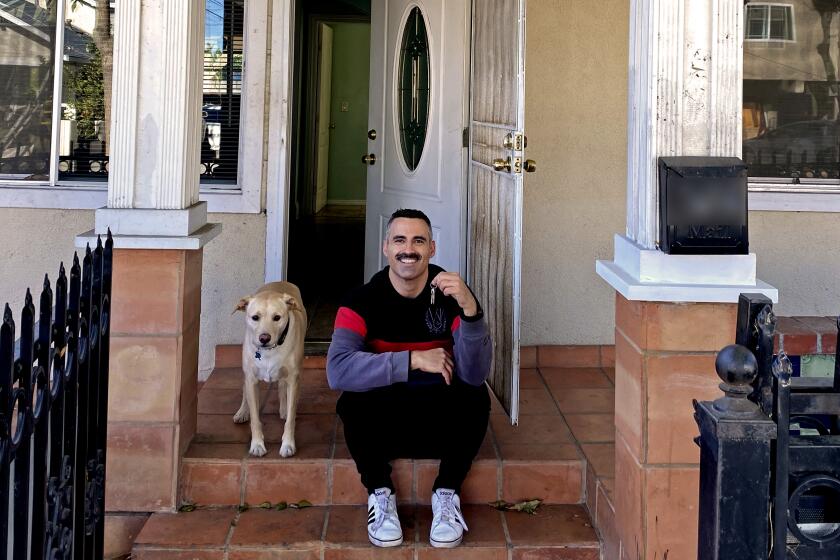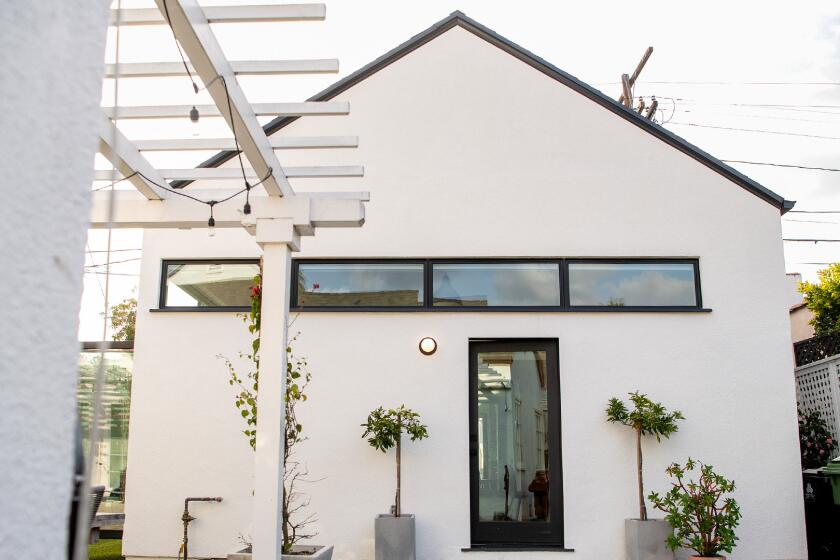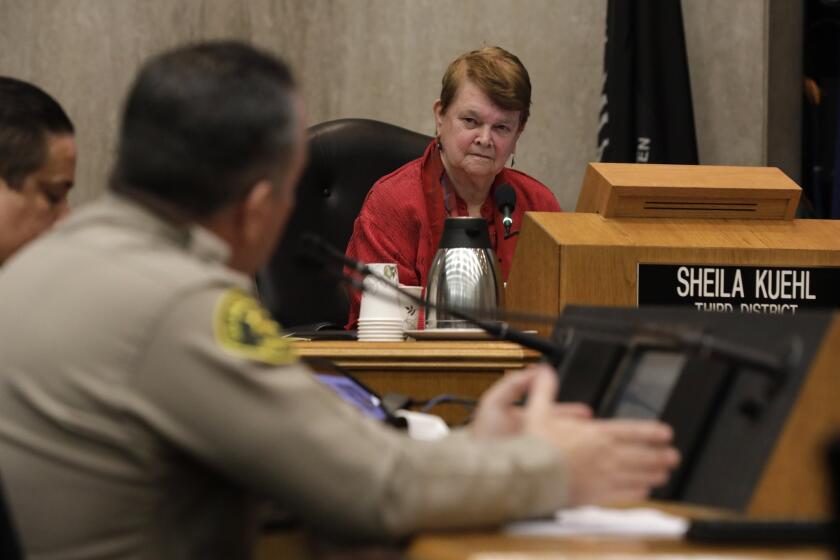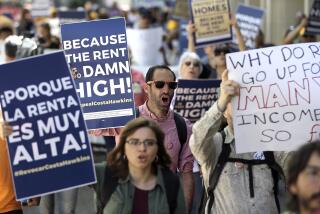A snapshot of new state government efforts to tackle California’s housing crisis
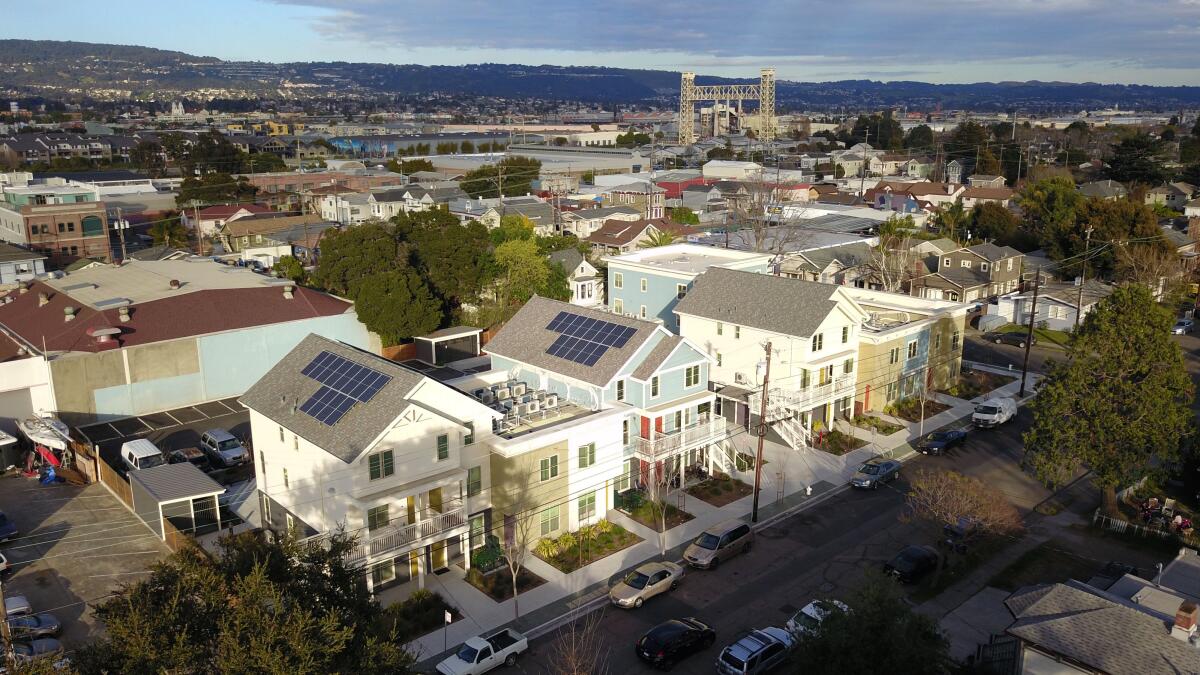
- Share via
SACRAMENTO — A year after the creation of sweeping laws to increase the construction of duplexes and small apartment buildings, California lawmakers have turned their attention to money for affordable housing and easing the burdens of homeownership for first-time buyers.
It’s an agenda that has so far drawn less attention and sparked fewer political fights than the one that dominated housing discussions at the state Capitol in 2021.
The Legislature focused great attention last year on Senate Bill 9, a law that went into effect in January and allows homeowners to build up to four units on their single-family lots. Gov. Gavin Newsom signed that measure along with Senate Bill 10, which lets cities streamline the development of small apartments with up to 10 units if they are near transit and job-rich areas. Both laws passed despite intense opposition from cities and homeowner associations, which claimed they were an infringement on local control and would eradicate California’s single-family neighborhoods.
Assemblymember Buffy Wicks, an Oakland Democrat and chairperson of the Assembly Committee on Housing and Community Development, said lawmakers this year are most worried about California’s intense affordability crisis and how it’s driving families out of communities.
“Voters are saying, ‘I want my kids to be able to buy a house and raise my grandkids in the community in which I raised my children.’ And they can’t,” Wicks said. “We hear that every time we come to the district, every time we’re home.”
Here are some of the most notable efforts that are now underway.
Buying a home for the first time is one of life’s sweet milestones.
A big budget earmark
In March, Wicks introduced Assembly Constitutional Amendment 14, which would set aside 5% of state general fund dollars for housing and homelessness every year over the next decade. Wicks said she anticipates that would free up $10 billion per year, based on 2022 estimates, with about 75% going toward affordable housing construction and 25% for rental assistance.
Wicks said it is important that California establish a consistent, long-term funding stream to tackle the state’s housing shortage, and that there will be “accountability measures” attached to the dollars to ensure the money is properly spent.
“It’s probably the biggest, boldest idea I’m working on,” Wicks said. “But one that I think is necessary.”
The measure requires a two-thirds majority vote in both houses of the Legislature and voters would have to then officially approve the constitutional change via a ballot measure in November.
Student housing showdown
The Legislature was quick to intervene last month in a UC Berkeley legal dispute over student admissions and housing that could have cut the school’s incoming class by thousands of students. A neighborhood group sued the university for allegedly violating California environmental laws with its plans to increase enrollment without setting up the necessary infrastructure to support that growth.
State Sen. Scott Wiener (D-San Francisco) said his Senate Bill 886 is not directly related to that controversy but could help prevent similar issues in the future. The bill, scheduled for a legislative hearing later this month, would exempt on-campus student and faculty housing projects from the state’s stringent environmental review regulations — meaning the University of California, California State University and California Community College systems could more easily accommodate growth.
“It is such a huge problem, the severe shortage of student housing and the rates of student homelessness,” said Wiener, who is the chairperson of the Senate Housing Committee.
Assemblymember Kevin McCarty (D-Sacramento) also introduced a proposal this year to create a $5-billion loan program to help public colleges build an estimated 25,000 new units at below-market-rate for students, faculty and staff.
Southern California home buyers talk about how they made it through — or around — the flurry of ever-higher bids.
Increasing homeownership rates
Three years after the Legislature focused much of its housing agenda on strengthening protections for tenants, lawmakers now want to reduce barriers for renters to becoming homeowners.
Assemblymember Tim Grayson (D-Concord) is leading a push for setting aside $600 million in this year’s state budget “to support affordable homeownership” in California. The group wants at least $200 million of that amount to be allocated for down payment assistance programs.
“Let’s use this state budget to increase access to affordable homeownership and begin to the turn the page on a long history of injustices that have denied too many Californians the opportunity to own a home,” Grayson said during a recent news conference.
A different approach would rely on new state borrowing. State Sen. Bob Hertzberg (D-Van Nuys) introduced Senate Bill 1457 to create a $25-billion general obligation bond to increase first-time homeownership opportunities. Hertzberg said that $18 billion would go toward loan programs and $7 billion would help finance construction costs. Voters would also have to approve this spending.
Proponents of these efforts point to surging home prices as evidence that the state needs to do more, and quickly, for Californians burdened by high costs of living.
The median price for a single-family home in 2021 surpassed $800,000, according to state figures. Nearly 40% of households in 2019 were “housing cost burdened,” according to an April report from the UC Berkeley Terner Center for Housing Innovation, which means residents were putting at least 30% of their income toward rent or ownership expenses.
California is also short on “entry-level homes” and first-time buyers often lack both the necessary savings for a down payment and a sufficient credit score, according to the report. As a result, only 58.8% of Californians own homes, one of the lowest rates in the country.
“This is the missing middle. This is the opportunity for people to be able to get on the ladder,” Hertzberg said during an April 7 hearing for SB 1457. “Because at the end of the day, if I had my druthers, there would never be another apartment. Everybody would own. Everybody would have a condominium or a co-op, or something, or an opportunity to make wealth.”
California homeowners have the right to build at least two ADUs on their property. But naturally, there are rules and costs. Here’s a guide.
Enforcing the laws
It’s one thing to pass dozens of new state housing laws but another to actually enforce them.
The Legislature last year expanded the California Department of Housing and Community Development’s authority to hold local governments accountable for new housing rules. The 2021-2022 state budget established the department’s Housing Accountability Unit with the goal of helping cities more efficiently execute their state-mandated housing plans and, if necessary, cite them for legal violations.
Lawmakers said the accountability team adds even more “teeth” to the many laws they’ve recently passed related to land use, density requirements and streamlining, which ensures local jurisdictions once resistant to housing requirements now follow state-mandated obligations to increase supply.
David Zisser, who leads the unit, said that enforcement often includes providing “technical assistance” to cities that need help navigating the state’s complex laws as they approve new housing projects. Other times, the unit has to issue a “letter of violation” or even refer a local jurisdiction to the state attorney general’s office for routine noncompliance.
In December, Zisser sent a notice of violation to the city of Anaheim for denying a transitional housing project’s application. A month later, he issued another notice to Encinitas for rejecting an apartment complex. Atty. Gen. Rob Bonta has issued similar letters to cities requesting urgent compliance with new state housing laws.
Zisser said his team’s first priority is to work collaboratively with local governments but that the unit will intervene when cities pass ordinances that block development or when they unnecessarily reject housing projects.
“We’re open for business. And we are here to sort of watch closely,” Zisser said. “And we are prepared to act if we are not able to come to a resolution.”
L.A. County is using federal COVID-19 funds to offer $1,000 a month to low-income residents for three years. The application window closes today.
More to Read
Sign up for Essential California
The most important California stories and recommendations in your inbox every morning.
You may occasionally receive promotional content from the Los Angeles Times.

